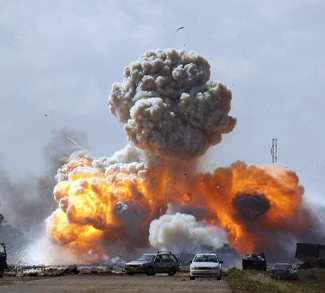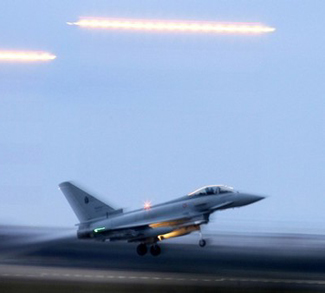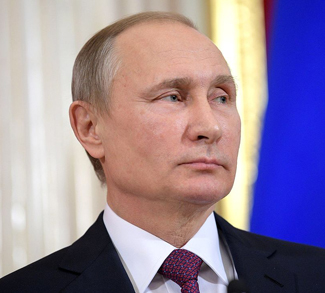The invocation of the responsibility to protect – R2P or RtoP, as it is more commonly known – by the UN Security Council in Resolution 1973 to authorize “all means necessary” to protect civilians in Libya was a landmark development. But the way in which the UN-mandated, NATO-led operation in Libya has unfolded highlights that there is an evident gap between the aspirations of the normative commitment and the way in which it has been implemented and operationalized. Despite this, international backlash regarding the Libya operation should not be directed towards R2P.
There has been some very important Canadian-led discussion on the invocation of the Responsibility to Protect (R2P or RtoP) in UN Security Council Resolution 1973, which authorized “all necessary means” – resulting in the current NATO-led operation – to protect Libyan civilians from their brutal and cornered leader.
In April, Taylor Owens from UBC’s Liu Institute of Global Issues issued a rebuttal hosted by the Canadian Internatinal Council (CIC) to Margaret Wente’s critical op-ed blaming R2P and “liberal intellectuals” in North America for waging war in Libya.
The CIC also featured an online academic roundtable with Roland Paris, Jennifer Welsh, and Andre Pratte, who engage on the issues of the invocation of R2P in Libya, as well as the indictments issued by the International Criminal Court (ICC) in response to the situation.
In each exchange, the commentary reflects the diversity opinion and myriad of questions that surround R2P, particularly when coercive force is being discussed, or, in the case of Libya, is implemented.
Throw an ICC indictment into the mix, and you have the makings for an endless conversation on the way in which in the international community responds to situations of mass atrocity crimes.
This piece seeks to insert itself into this conversation. It uses the points raised by Paris, Welsh, and Pratte with regards to R2P, Res. 1973, and the current operation in Libya as a jumping off point. While it shares a similar title with Owens, it focuses instead on what has transpired in Libya since the publication of his post, particularly with regards to the questions raised over the stated (and unstated) goals of the NATO-led operation, and the way in which the mission has been carried out to date.
Civilian protection or regime change?
The decision to enforce a Security Council-mandated No-Fly Zone in Libya to protect civilians was both necessary and right. By ruthlessly cracking down on protestors and issuing crazed statements that were hauntingly similar to those that preceded the Rwanda genocide, it became apparent that Muammar Gaddafi would do anything to crush the revolt and maintain power, even slaughter his own civilians.
But since NATO and a few Gulf allies began the enforcement of the NFZ, it has become clear that the objective of the mission has exceeded its civilian protection mandate and now includes regime change. As Andre Pratte states:
The Security Council 1973 made very clear that the goal of the Libya mission is to protect civilians, not to affect regime change. Yet here we are bombing Libya with the explicit goal of bringing Gaddafi down.
NATO’s run-around with regards to its objectives has had particularly negative implications for the norm, and has evoked some tough questions with regards to R2P implementation. On top of this, the pursuit of regime change in Libya has actually played into the hands of R2P critics, has done more harm than good for the norm.
In perhaps the most scathing commentary to date, David Reiff goes for R2P’s jugular:
R2P may not have been designed as the latest version of humanitarian intervention, but with the Libyan action, that is what it has become.
Attention will be paid to Reiff’s critique as this post progresses, but his comments reflect the backlash towards R2P since the Libya operation began.
Backlash towards use of force in Libya
Despite international condemnation of the Gaddafi regime, the controversial nature of the use of force to protect civilians has not eluded the UN-authorized, NATO-led operation in Libya.
Concerns over NATO’s reliance on air-power, particularly in a civilian protection mission, have been made clear. That an errant NATO missile claimed the lives of innocent Libyans – civilians NATO is acting to protect – gave grounds to these concerns, and indeed took a toll on the credibility of the mission. Thus, on top of concerns of NATO’s objectives, the operation has received its fair of share of criticism and condemnation for the way in which it has been carried out as well.
As a result of these concerns, and due to its invocation in the Security Council resolution that authorized the current operation in Libya, R2P has been caught up in the mix of this controversy.
A look to social media highlights this. On Twitter, for example, a search of “R2P” on reveals many tweets that either equate the norm to “western imperialism” or include a reference to R2P or a hash-tag (#R2P) in condemning the use of force by NATO and others in Libya. Many tweeps (Twitter users, for those of you who are new to the social media outlet) are also questioning the inconsistency of R2P’s application: Why not Syria?
There may be grounds for the latter, but all three forms of criticism have nothing to do with the norm itself. The aspirations of the norm point to the fact that if it were a living, breathing entity, it would no doubt invoke and implement itself in Syria. Unfortunately this is not a reality.
The backlash towards R2P has not been limited to social media outlets, and has become evident in capitals around the world, which have included the norm in their criticism of the NATO operation.
At the recent UN General Assembly informal interactive dialogue on R2P, a number of states – including Russia, China, and Brazil – made clear their positions on the use of force in Libya: NATO has deliberately exceeded to mandate of Resolution 1973 by using the invocation of the R2P framework to pursue regime change.
Real implications for present cases…
This has had very real implications with regards to Syria. As a recent article by Gus Taylor of World Politics notes, the inaction on behalf of the Security Council (which has yet to issue a statement on the situation) to condemn the brutal crackdown by Bashar al-Assad and his security forces in Syria can be linked to the Libya backlash:
“The Chinese, Russians, Indians and Brazilians remain opposed” Others on the Security Council might favor it, but Russia and China would veto a resolution calling on the Syrian government to restrain itself. “This is very much a blow-back from the Libyan episode,” explained Gowan. “Russia and China — and also India — feel that the West pushed them into a corner over Libya…They fear that they accepted a precedent for Western interventionism that they now want to erase, and Syria has been the test case for that.”
Russian PM Dmitry Medvedev’s statement on a trip to Germany corroborates this:
“We do not want that the events in Syria unfold as they did in Libya. That is why we are cautious here.”
Thus, the likelihood of R2P being referenced in any Security Council resolution on Syria – if it comes – is slim to none. While Libya may not “kill” R2P, as David Bosco argues in his blog on foreignpolicy.com, it certainly carries weighty implications for the norm moving forward.
Real implications for future cases
A look at the way the vote fell on Resolution 1973 highlights these implications for the implementation for R2P in future cases.
Passing with only 10 votes, Resolution 1973 was absent many key international powers, including the entirety of the BRIC (Brazil, Russia, India, and China) group. As Tim Dunne and Jess Gifkins note in The Interpreter:
“Abstentions by China, Russia, Germany, India and Brazil raise a bigger question for forcible civilian protection; what future do such actions have in a world that is not being led by the United States and its western allies? … Does this response by the BRIC powers foreshadow an era of non-intervention will be upon us when we transition to a post-American world? If not, where is the leadership on humanitarian protection going to come from?”
The precedent set by the Libya resolution and the way in which NATO has carried out the operation will likely not warm this group of growing global powers up to R2P implementation in future cases, particularly where the use of force is concerned. As Brazil stated in the recent UNGA dialogue:
“With regards to Resolution 1973, Brazil had serious doubts on whether the use of force…would lead to the realization of our common objectives, that is, the immediate end of violence and the protection of civilians. It is regrettable that the manner in which the resolution has been implemented has not dispelled our doubts.”
Lingering concerns held by the emerging power bloc in the international arena as a result of Libya could easily pose a daunting obstacle on the road to consistent and effective R2P implementation to protect civilians elsewhere, especially where the use of force is required to protect vulnerable populations.
Difference between normative aspirations, implementation can’t be blamed on R2P
Along with the coming-into-force of the Rome Statute of the International Criminal Court, the commitment by UN member states at the 2005 World Summit to an R2P was a landmark achievement in the global effort to abolish the world of genocide, crimes against humanity, war crimes and ethnic cleansing.
In a time where the norm has come under fire, we must do well to remember what R2P is and what it allows for. Nowhere in the 2005 World Summit Outcome Document does it suggest that regime change is a viable justification for Security Council-mandated intervention, nor does it bestow a primacy or preference to military responses. In fact, R2P does quite the opposite, and in this regard David Reiff could not be more wrong in his analysis in merely equating R2P as a “new form of humanitarian intervention”.
In this regard, the Libya case has revealed that there must be a distinction made between the normative aspirations of R2P and the way in which it is implemented by any state or group of states acting within the mandate of a Security Council resolution.
R2P has a “narrow but deep” guideline for acting in any given situation, and regime change is most certainly not one of them. By mandating the enforcement a NFZ to protect Libyan civilians from atrocity, the Security Council acted in the spirit of the Responsibility to Protect. By pursuing regime change through targeted airstrikes under the auspices of an R2P-mandate, NATO’s actions have fallen outside the norm’s framework.
The logic of laying blame on the norm is thus flawed and unwarranted. Such blame is not only misplaced, it sets the international community back in the important work it has done with regards to R2P and the protection of civilians from mass atrocity, and has real implications on the ground.
The opinions, beliefs, and viewpoints expressed by the authors are theirs alone and don’t reflect any official position of Geopoliticalmonitor.com.




